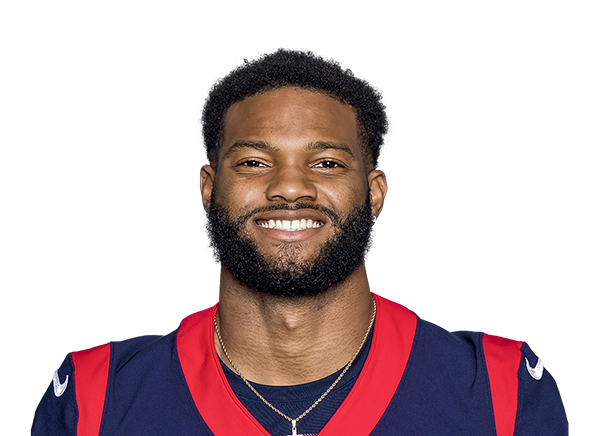Draft Insights: Part One
In this two-part series, I talk about what I believe to be a common mindset many fantasy coaches possess leading up to the NFL Combine, NFL Draft and ultimately fantasy rookie drafts. In Part I, the focus is on my past experiences in fantasy relating to rookies along with a historical exercise from a long running dynasty league with over a decade of first round results to help bring perspective to the discussion. I’ll wrap up with what I perceive to be the new NFL and how it has changed the lay of the fantasy landscape. In Part II, I will discuss the opportunities for 2015, the incoming rookie class and the depth available across it. In the near future, I will also be offering more in depth rookie analysis and rankings to help you get a jump on the competition, so stay tuned!
Let’s dive in …
Truth be told, I love the draft. Arguably too much. Let me explain.
For nearly a decade prior to DLF’s humble beginnings in 2006, I’ve closely followed the annual migration of collegiate players as they solidify the dream that they all worked so diligently to realize. There is no single path to the NFL. Some are clearly gifted athletes, others workout warriors and many more, with odds stacked well against them, seemingly will themselves to the next level on determination and drive to outwork the competition.
It’s well understood that most all who reach the NFL will never become household names, fantasy superstars or even make a NFL roster. For in the NFL, much like the plight of a newborn sea turtle, the road is long and the odds longer still.
For us dynasty geeks, the opportunity to add a young collegiate superstar to our roster carries with it excitement and hope as the missing piece of the puzzle or the asset that will keep us on top of our league brethren. Unlike the redraft format in which all but a few of the most notable rookies will have a noteworthy impact in a given year, dynasty leaguers well understand that to strike gold in a rookie draft means the potential of securing an asset for up to a decade or longer.
So how can one like myself love the draft “too much?”
I play in multiple leagues. “Experts” leagues with industry insiders and those who run well-known fantasy sites. A majority of these carry bragging rights only. Most of us in these leagues value little else beyond the opportunity to stand above the fallen bodies of fellow “experts” as the champion. My favorite league is a long-running super-fan dynasty league that originally fueled my passion for the dynasty format. Other leagues are primarily money leagues that offer nothing more than a chance to use my knowledge as a weapon to increase the odds of winning a share of the available purse. After all, if you run a fantasy football website, it stands to reason that you should have at least a small advantage in information, or at least dedication.
[am4show have=’g1;’ guest_error=’sub_message’ user_error=’sub_message’ ]
The reason I bring up the league types is for one important reason: You must establish the ultimate goal of each league in which you play. Yes, we all would like to win every league, every year. But it goes far beyond that.
In my long-running dynasty league, I have a real attachment to nearly every player who graces my roster. I draft and trade for players that ‘move’ me in some way, even if they may not be the best player(s) within their respective positions. Counter intuitive you say? I think not. For those of us in multiple leagues, how does one possibly root for a player in one league who is also beating you in another? It’s not easy. But a team filled with your favorite players provides a focal point each week, a source of enjoyment that you can emotionally invest regardless of the reward for winning a championship. In this particular league, the purse is the smallest of any of the money leagues, yet the enjoyment factor can’t be touched.
And this is where I love the draft too much.
I stand by my assertion that the draft, at least for fantasy impact, is a completely over-hyped and over-priced affair. That’s not to say that tomorrow’s superstars aren’t available each year but, instead, that our ability to identify them with any level of confidence or accuracy is far below the price often paid for the opportunity to choose one. In fact, what if I told you that it was utter folly to do anything other than trade away your draft picks for known fantasy commodities or production?
Yes, I say that with tongue firmly planted in cheek, at least to some degree. But when reviewing history related to the NFL Draft, it’s not hard to make that ever-so-bold claim.
Despite my belief, I’m all-in on the draft each year. Nothing excites me more in fantasy than the ability to spend countless hours watching highlight reels, poring over statistics, reading coaching and ‘expert’ commentary all culminating into the NFL Combine, or as Mike Mayock calls it – the underwear Olympics. The Combine peaks the irrational exuberance of all draft geeks. Dozens of times I’ve been off my couch, head in my hands, following a blazing 40 time or a player who jumps “out of the building.” Twitter is set ablaze and off-season fantasy sites come alive with analysis and predictions. We here at DLF are certainly no exception.
….and then NFL Draft takes place and half of the incoming rookies fall to poor situations, losing much of their fantasy intrigue. Other lower tiered players may actually see their stock rise dramatically with the prospect of immediate playing time or a shallow depth chart. Even at the peak of the draft hype, well out of mind is the fact that not one of these players has taken the field with their new team. And even when they do, a vast majority of rookies will never make an impact in fantasy.
But the hype train rolls on.
You may be confused about my contradictory stance on display here. On some days I, myself, am incredulous as I allow myself to be drawn into the intrigue, hype and lofty expectations of each prospect. Even as I jockey to secure better draft picks, I’ll find myself begging others to “do as I say, not as I do.” But recall that in my longest running league, my aim is to secure a team of my favorite players which also includes as many high impact young(er) players as I can get my hands on. I’ve been more than willing to sacrifice fielding a championship worthy team to instead build a young team with the hope that someday I may assemble THE dynasty roster of my favorite players. Thus far I have but a single championship and am rebuilding with three picks in the upcoming 2015 draft.
I will reassert that the best way to rebuild or field a true dynasty team is through building with proven veteran production and established younger players to provide longevity. A well placed rookie selection can provide significant impact if Lady Luck smiles upon you, but as you will see later here, there are no guarantees and higher picks can lead you astray. You may even see that there is an argument to be made that picks outside the top three in annual fantasy rookie drafts hold more promise as, often times, the top players selected are those that fall to better starting situations rather than being more talented. In fantasy, most have a drive-thru mentality – the quicker we can get the results we seek, the better we feel.
Before talking about 2015, let’s talk about what has gone before. I offer to you here a look at the first round of my longest running and favorite dynasty league. It’s a PPR format with standard scoring with the small exception of quarterbacks receiving six points per touchdown instead of the traditional four. This does elevate quarterbacks to a small degree.
We’ll review a few items following.
Rather than spend far too long breaking down the individual drafts, I’ll let you draw your own conclusions. I offer this historical perspective in hopes of proving a point, if only even to a small degree that, considering the hype of an incoming rookie class, history is not on your side in most situations. This does not, in any way, suggest that a rookie selection can be akin to striking fantasy gold but, instead, that determining or projecting where that gold exists is an entirely different matter altogether. Some of the picks may seem horrible in retrospect but understand that, at the time, the picks filled a roster need or represented an opportunity that the selecting coach felt provided upside. There’s a story behind every pick.
Let me add a few notes from the historical example:
- In Seven of eleven drafts, a running back was selected first
- Of the running backs selected first overall, only one (Adrian Peterson, 2007) has lived up to the value. Eddie Lacy (2013) looks as if he may live up to the hype but even Le’Veon Bell (2013) as the second running back off the board looks to be the better selection
- Frank Gore (2005), Maurice Jones-Drew (2006), Jamaal Charles (2008), DeMarco Murray (2011) and Lamar Miller (2012) were all second round fantasy selections
- Finding fantasy relevant receivers in the first round of a fantasy rookie draft is fraught with peril. More on this shortly
- Tight ends are rarely selected in the first round of a fantasy rookie draft, but when they are, they normally produce well (but with limited data)
- This league is a PPR league, but it wasn’t originally – that changed in 2012.
- The scoring format for this league rewards six points per passing touchdown, putting a greater premium on quarterbacks
The New NFL
What can we learn from looking at this historical perspective and what has changed over the past eleven years?
There’s little way to sugar-coat the results. If you’re pinning your rebuild hopes on multiple first round selections, while it is possible to get lucky, the odds are not in your favor. Your best opportunity rests with the depth of a draft class. Years such as 2013 and 2014 have presented what appears to be tremendous first round fantasy production. Which brings me to my next point.
When analyzing the first rounds of previous NFL drafts, there has been a relatively striking trend of late. Whether due to better scouting, better research or, perhaps, an increase in athlete talent, NFL first round selections have been producing at a far better rate in the past few years, especially at the wide receiver position. Consider this fact with that of other current trends in the NFL and we have a potential paradigm shift opportunity to be taken advantage of if you are so bold as to seize it.
The NFL running back position as we know it has been significantly altered. The dreaded running back by committee (RBBC) use has not only increased in recent years, but is now the norm – and in many cases with catastrophic fantasy impact. An argumentative coach could suggest that this actually heightens the value of a high first round selection which grants the opportunity to secure what may be a carry-the-load back but a quick glance back at our historical perspective should clearly remind us of the odds. In the past two years (2013 – 2014), no running back has been selected in the first round. In 2012, three were selected in the first round, Trent Richardson (1.03), Doug Martin (1.31) and David Wilson (1.32). Queue the Price is Right loser soundbite here.
As mentioned recently above, the trend of successful and productive early-selected receivers is presenting an opportunity that cannot be ignored. Receivers are getting bigger and faster – a simple glance at recent NFL draft history will confirm this. When combined with the much longer career opportunity afforded to productive receivers, fantasy coaches playing in a PPR format can now, I believe, begin officially elevating these players over rookie running backs. The odds are simply better at maintaining production for a longer period of time. The NFL has migrated to even more of a passing league and each new year is bringing higher and more consistent fantasy production in both quarterbacks and receivers. Favorable interference rules have heightened the value of receivers and NFL coaches are taking advantage.
Summary
Again, I will allow you to draw your own conclusion(s). With the draft, beauty is in the eye of the beholder in many cases and there certainly exists intrigue and opportunity in every round of every draft. The argument to be waged is whether a selecting coach would be better off in taking a known commodity over that of a roll of the dice. To me, the choice is obvious yet I still fall for the draft each year in my favorite leagues. And when looking at the recent two years, perhaps a trend is forming that we draft nuts can hold onto. Things are looking up.
In the next part of this series, I dive into the prospects for 2015 giving you my initial thoughts of the depth of the class as a whole, individual positions and my early thoughts on who will be the first ten rookies off the board in fantasy drafts. I hope your interest is now piqued.
For any of you that have been with us for any length of time, you know that there is no other site that covers the fantasy off-season like DLF. It’s where our name was made and our passion for it is clear. Stick with us!
Follow Jeff on Twitter: @DLF_Jeff
[/am4show]
- Lineup Advice: Wrap-up, Thank You and Goodbye (TTFN) - January 1, 2024
- Lineup Advice: Week 17 – Championship Edition - December 26, 2023
- Lineup Advice: Week 16 – The “What is” Edition - December 19, 2023


























































